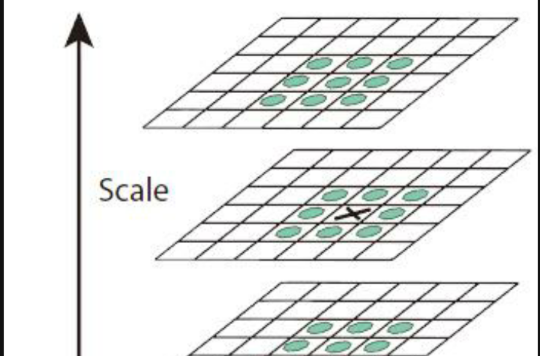基本介紹
- 中文名:非剛性三維形狀的內蘊相似匹配算法研究
- 外文名:Intrinsic non rigid 3D shape similarity matching algorithm
- 類型:三維模型
- 領域:現代計算機套用
中文摘要,外文摘要,
中文摘要
本文研究了非剛...>> 詳
大量的非剛性三維模型為建立魯棒的形狀匹配算法帶來了挑戰。這類三維模型自身的形狀存在較多的可變性,它們通常是對原始剛性三維形狀進行一定程度的等距非剛性變形而得到的。於是,其類內形狀差異往往比類間的差異更加明顯。為了
本文研究了非剛性三維形狀內蘊相似性匹配中的相關算法,其中,主要貢獻包括:
第一,提出一種高維內蘊形狀的局部特徵描述方法。為了減少形狀標準化映射過程中的距離近似誤差,選用一個高維歐氏空間來計算非剛性三維模型的內蘊標準形。然後利用子空間分解技術,從中構造內蘊自旋圖像特徵,來直接刻畫高維形狀的局部幾何信息。內蘊自旋圖像無關於非剛性模型的等距形變,同時有效繼承了自旋圖像的非參數性及局部描述能力。
第二,提出一種非剛性模型高維內蘊形狀的最佳化方法。為了提升標準形的描述能力,定義嵌入誤差函式來度量模型標準化映射過程中產生的形狀扭曲程度,並選取誤差足夠低、同時又最為緊緻的臨界歐氏空間來計算其高維內蘊形狀。在異維標準形之間,推廣內蘊自旋圖像特徵進行高維形狀的直接匹配。得益於嵌入空間的最佳化,內蘊形狀信息得以更為精準地刻畫。
第三,提出一種高效的形狀標準化方法,自動地將非剛性三維模型映射為等值線標準形。通過計算測地距離等值線,並將其重對齊到引導軸上,保證了形狀部件被局部映射為統一的非彎曲結構。同時,利用模型表面的測地距離約束來最佳化引導軸的朝向,保證整體形狀結構的內蘊性質。等值線標準形顯式消除非剛性模型的等距形變差異,不僅減少了形狀扭曲,而且具有更高的計算效率。
第四,提出一種基於自動逆關節形變的非剛性三維形狀檢索算法。藉助於剛性形狀分割與格線變形技術,自動調整模型的形狀結構,消除關節形變信息。然後結合剛性匹配方法,來計算非剛性形狀之間的內蘊相似性。逆關節形變算法保持原始非剛性三維模型的幾何細節信息,顯著改善了內蘊形狀匹配的效果。此外,模型檢索的計算複雜度也得以大大降低。
關鍵字:非剛性三維形狀,內蘊相似匹配,標準形,內蘊自旋圖像,等測地線
本文研究了非剛性三維形狀內蘊相似性匹配中的相關算法,其中,主要貢獻包括:
第一,提出一種高維內蘊形狀的局部特徵描述方法。為了減少形狀標準化映射過程中的距離近似誤差,選用一個高維歐氏空間來計算非剛性三維模型的內蘊標準形。然後利用子空間分解技術,從中構造內蘊自旋圖像特徵,來直接刻畫高維形狀的局部幾何信息。內蘊自旋圖像無關於非剛性模型的等距形變,同時有效繼承了自旋圖像的非參數性及局部描述能力。
第二,提出一種非剛性模型高維內蘊形狀的最佳化方法。為了提升標準形的描述能力,定義嵌入誤差函式來度量模型標準化映射過程中產生的形狀扭曲程度,並選取誤差足夠低、同時又最為緊緻的臨界歐氏空間來計算其高維內蘊形狀。在異維標準形之間,推廣內蘊自旋圖像特徵進行高維形狀的直接匹配。得益於嵌入空間的最佳化,內蘊形狀信息得以更為精準地刻畫。
第三,提出一種高效的形狀標準化方法,自動地將非剛性三維模型映射為等值線標準形。通過計算測地距離等值線,並將其重對齊到引導軸上,保證了形狀部件被局部映射為統一的非彎曲結構。同時,利用模型表面的測地距離約束來最佳化引導軸的朝向,保證整體形狀結構的內蘊性質。等值線標準形顯式消除非剛性模型的等距形變差異,不僅減少了形狀扭曲,而且具有更高的計算效率。
第四,提出一種基於自動逆關節形變的非剛性三維形狀檢索算法。藉助於剛性形狀分割與格線變形技術,自動調整模型的形狀結構,消除關節形變信息。然後結合剛性匹配方法,來計算非剛性形狀之間的內蘊相似性。逆關節形變算法保持原始非剛性三維模型的幾何細節信息,顯著改善了內蘊形狀匹配的效果。此外,模型檢索的計算複雜度也得以大大降低。
關鍵字:非剛性三維形狀,內蘊相似匹配,標準形,內蘊自旋圖像,等測地線
外文摘要
With the rapid advance of technologies, three-dimensional models have been playing an increasingly important role in many modern computer applications. To better organize and reuse these valuable resources, it desperately requires the development of an efficient shape matching and retrieval system. It is also significant to promote the researches of other 3D model processing algorithms.
However, many nature objects are non-rigid, which poses a great challenge in developing robust shape matching algorithms. Non-rigid 3D shapes are generated by isometrically deforming the original rigid ones. Therefore, their intra-class shape variations are often at the same magnitude or even larger than the inter-class variations. In order to evaluate the intrinsic similarity between non-rigid objects, the shape matching method is required to be insensitive to isometric deformations.
This dissertation concerns on the algorithms regarding intrinsic similarity matching of non-rigid 3D shapes. The main contributions of this thesis include,
First, an efficient local signature is proposed to represent the high-dimensional intrinsic shape. To preserve more embedding accuracy, a higher dimensional Euclidean space is preferred for calculating the canonical form of the non-rigid 3D model. Then, the subspace decomposition technique is employed to construct intrinsic spin images, which directly characterize the local geometric properties of high-dimensional shapes. The intrinsic spin image is not only invariant to isometric shape deformations, but also inherits the locality and non-parametric nature of the spin image descriptor.
Second, a method for optimizing the canonical form is proposed for each individual non-rigid 3D model. To obtain the best representation power, a strategy is first proposed to select the most compact yet expressive Euclidean space. It is based on the embedding error, which measures the amount of shape distortion caused by the canonical mapping. Then, the intrinsic spin image is employed to conduct the high-dimensional shape matching across different canonical spaces. Benefit from the optimization of canonical spaces, intrinsic shape properties are characterized with more accuracy.
Third, an efficient intrinsic embedding method is proposed to automatically map the non-rigid shape to its contour canonical form. Locally, each subpart is regularized with an unbent shape structure, by adaptively re-aligning the geodesic contours along a straight guidance axis. The isometry-invariance of its holistic structure is guaranteed by an global optimization under the geodesic constraints defined on the shape surface. The contour canonical form explicit eliminates the isometric deformations of the non-rigid object. It not only reduces the shape distortion, but also enhances the computational efficiency.
Finally, a new non-rigid retrieval framework is proposed based on automatic shape anti-articulating. With the 3D segmentation and mesh editing technique, the shape structure is adjusted, in order to eliminate existing shape articulations. Afterwards, the rigid shape matching technique is introduced to measure the intrinsic similarity between the original non-rigid objects. The anti-articulating algorithm preserves more geometric details and guarantees the smoothness of the generated shape, which definitely improves the intrinsic matching performance. Besides, the time complexity for shape retrieval is greatly reduced.
Keywords: non-rigid 3D shapes, intrinsic similarity matching, canonical form, intrinsic spin image, geodesic contours
However, many nature objects are non-rigid, which poses a great challenge in developing robust shape matching algorithms. Non-rigid 3D shapes are generated by isometrically deforming the original rigid ones. Therefore, their intra-class shape variations are often at the same magnitude or even larger than the inter-class variations. In order to evaluate the intrinsic similarity between non-rigid objects, the shape matching method is required to be insensitive to isometric deformations.
This dissertation concerns on the algorithms regarding intrinsic similarity matching of non-rigid 3D shapes. The main contributions of this thesis include,
First, an efficient local signature is proposed to represent the high-dimensional intrinsic shape. To preserve more embedding accuracy, a higher dimensional Euclidean space is preferred for calculating the canonical form of the non-rigid 3D model. Then, the subspace decomposition technique is employed to construct intrinsic spin images, which directly characterize the local geometric properties of high-dimensional shapes. The intrinsic spin image is not only invariant to isometric shape deformations, but also inherits the locality and non-parametric nature of the spin image descriptor.
Second, a method for optimizing the canonical form is proposed for each individual non-rigid 3D model. To obtain the best representation power, a strategy is first proposed to select the most compact yet expressive Euclidean space. It is based on the embedding error, which measures the amount of shape distortion caused by the canonical mapping. Then, the intrinsic spin image is employed to conduct the high-dimensional shape matching across different canonical spaces. Benefit from the optimization of canonical spaces, intrinsic shape properties are characterized with more accuracy.
Third, an efficient intrinsic embedding method is proposed to automatically map the non-rigid shape to its contour canonical form. Locally, each subpart is regularized with an unbent shape structure, by adaptively re-aligning the geodesic contours along a straight guidance axis. The isometry-invariance of its holistic structure is guaranteed by an global optimization under the geodesic constraints defined on the shape surface. The contour canonical form explicit eliminates the isometric deformations of the non-rigid object. It not only reduces the shape distortion, but also enhances the computational efficiency.
Finally, a new non-rigid retrieval framework is proposed based on automatic shape anti-articulating. With the 3D segmentation and mesh editing technique, the shape structure is adjusted, in order to eliminate existing shape articulations. Afterwards, the rigid shape matching technique is introduced to measure the intrinsic similarity between the original non-rigid objects. The anti-articulating algorithm preserves more geometric details and guarantees the smoothness of the generated shape, which definitely improves the intrinsic matching performance. Besides, the time complexity for shape retrieval is greatly reduced.
Keywords: non-rigid 3D shapes, intrinsic similarity matching, canonical form, intrinsic spin image, geodesic contours

